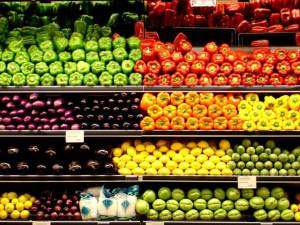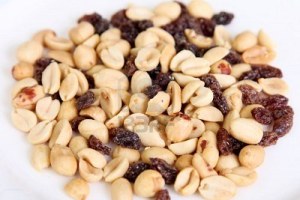Blog Archives
Chapter 4: Fruit & Veggies
Formula: [organic fruits] + [organic veggies] = lower toxin count in the body
All this research is making me anxious to start trying new recipes, but a few more steps before I can dive into cooking. I know now what a balanced diet consists of and to take multivitamin supplements to reap the full benefits. It is time to figure out which foods to stay away from due to pesticides and other residues that can seep into the market produce.
According to my reading from Diet for a Poisoned Planet, Steinman has organized all the food into three categories. Green are foods that would cause up to five excess cancers in one million people and still have some pesticide residues. They are not absolutely and completely free from toxic residues so Steinman is not endorsing that these are safe to eat. He marks these as ones with the least amount of residue so it reduces the intake of toxins into the body. Yellow are foods that would cause five to ten cancers and red are foods with risk beyond ten cancers. He uses the Total Diet Study to compile all the information in his book. Hundreds of foods are tested each year for pesticides. It measures the number of residues found in sixteen samples (example: lettuce had 36 residues in 16 samples meaning each sample had an average of 2-3 pesticide residues), the different types, and the concentration.
So here is the list of what to watch out for.
Green: It’s a go! These are the safest nonorganic foods to eat.
- alfalfa sprouts
- applesauce
- asparagus
- avocados
- adzuki beans
- bananas
- bean sprouts
- beets
- black-eyed peas
- brussels sprouts
- cabbage
- carrots
- cauliflower
- chives
- corn
- cranberry juice
- dates
- figs
- fruit cocktail
- grape juice
- grapefruit
- guavas
- hazelnuts
- lemonade (frozen reconstituted)
- lemons
- lentils
- lima beans (mature)
- limes
- mixed vegetables (canned)
- mushrooms
- navy beans
- onions
- oranges
- papayas
- peaches (canned)
- pears (canned)
- peas
- pecans
- pineapple juice
- pineapples
- pinto beans
- radishes
- rapini
- red beans
- sesame seeds
- shallots
- snap green beans
- sunflower seeds
- tangerines
- tomatoes (canned)
- watercress
- watermelon & watermelon seeds
Yellow: These have a higher pesticide saturation and should be swapped for an organic substitute. According to Steinman, “all plant foods, even the most pesticide-saturated, are better for you than the worst animal foods” (p. 34).
- apple juice, apples
- apricots
- artichokes
- balckberries
- blueberries
- broccoli
- cantaloupe
- celery
- cherries
- cherry tomatoes
- chili peppers
- choysum
- collard greens
- cranberries
- crenshaw melons
- cucumbers
- eggplant
- escarole
- grapefruit juice
- grapes
- green bell peppers
- honeydew melon
- jalapeno peppers
- kale
- kiwi fruit
- leeks
- lettuce
- lima beans (immature)
- mung beans
- nectarines
- okra
- orange juice
- parsley
- parsnips
- peaches
- pears
- persimmons
- plums
- poblano peppers
- pomegranates
- potatoes
- prunes
- radishes
- raspberries
- rutabagas
- serrano chilies
- spinach
- strawberries
- string beans
- summer squash
- sweet potatoes
- swiss chard
- tomatillos
- tomatoes, tomato juice, tomato sauce
- turnip greens, turnips
- winter squash
Red: Avoid these and substitute organic varieties.
- peanuts
- raisins
This list is from the book, which used results from the Total Diet Study of 1986. I went to the Food and Drug Administration website and found updates, but quite frankly I’m not sure what to make of it. A list released by the Environmental Working Group reveals the produce most laced with pesticides from 2011. You can read through an article written by Dan Shapley of The Daily Green for the twelve foods you should buy organically and its substitutes.
Steinman, David. Diet for A Poisoned Planet How to Choose Safe Foods for You and Your Family. New York: Ballantine Books, 1990. Print.


